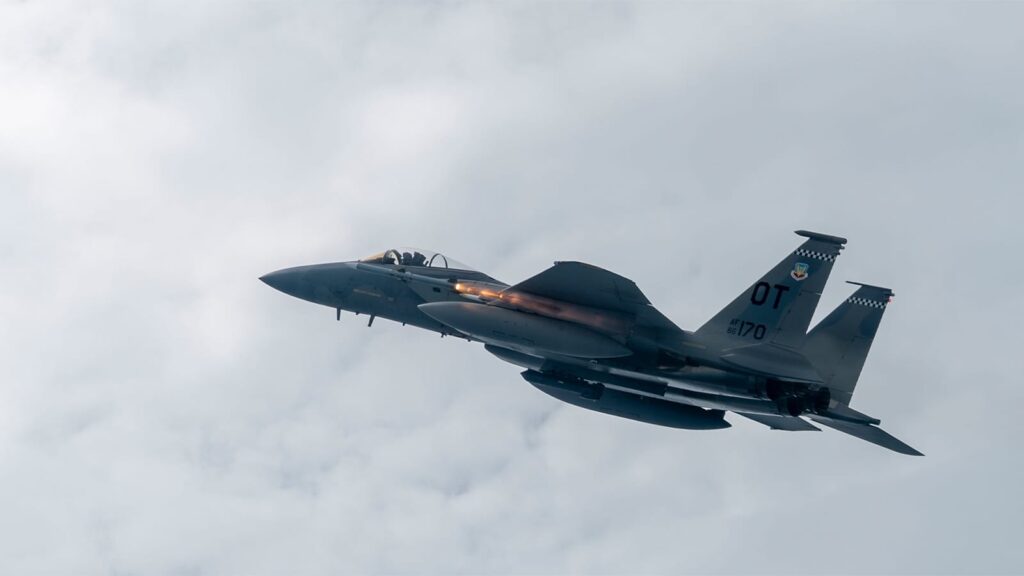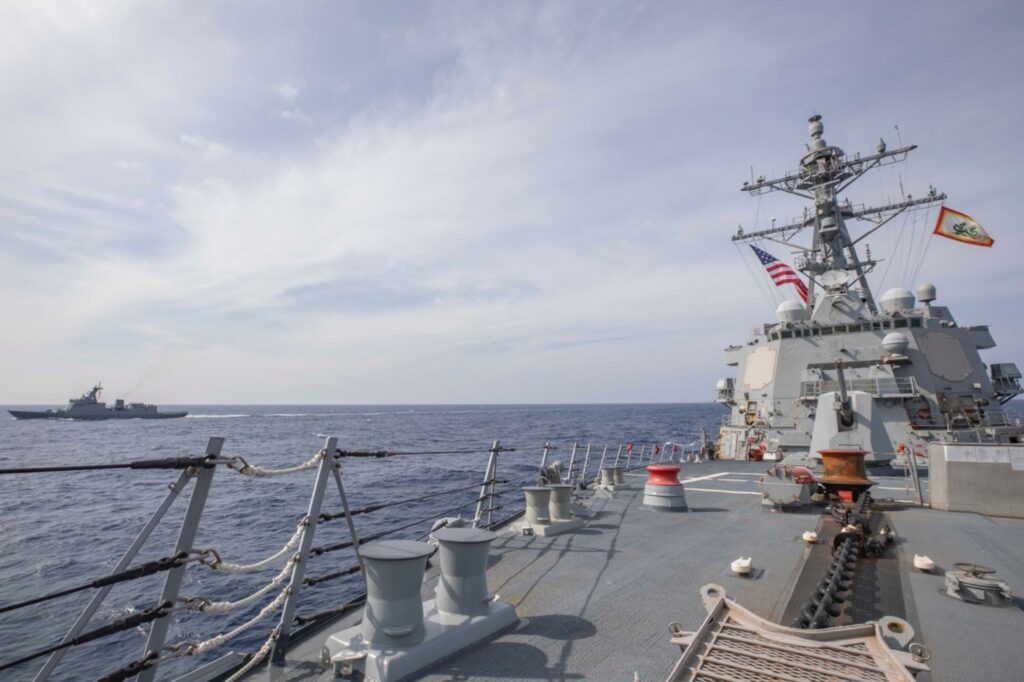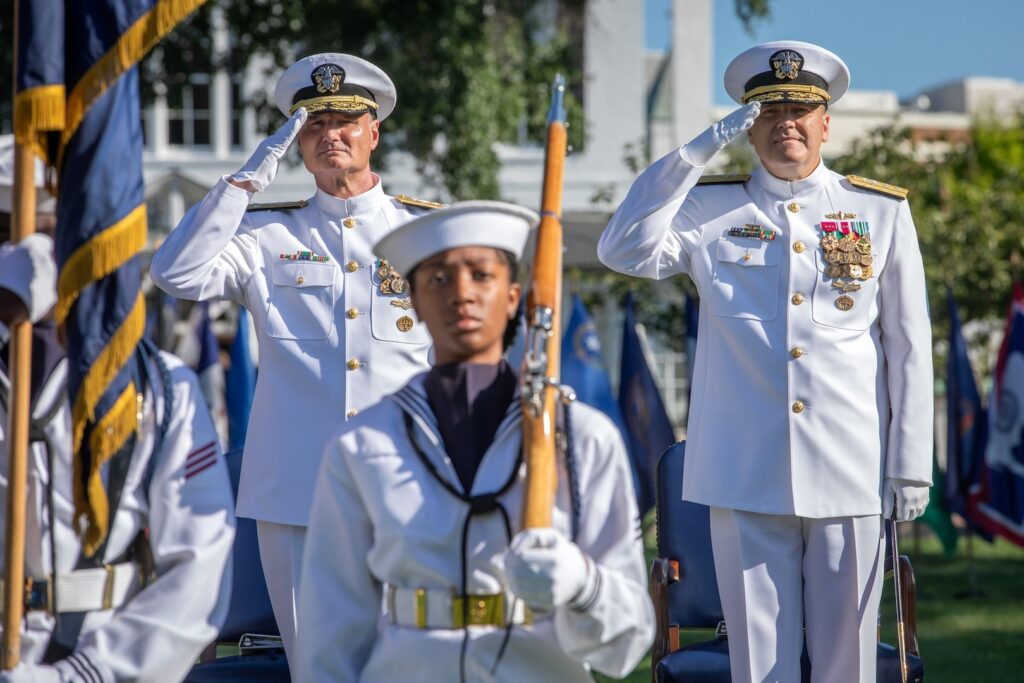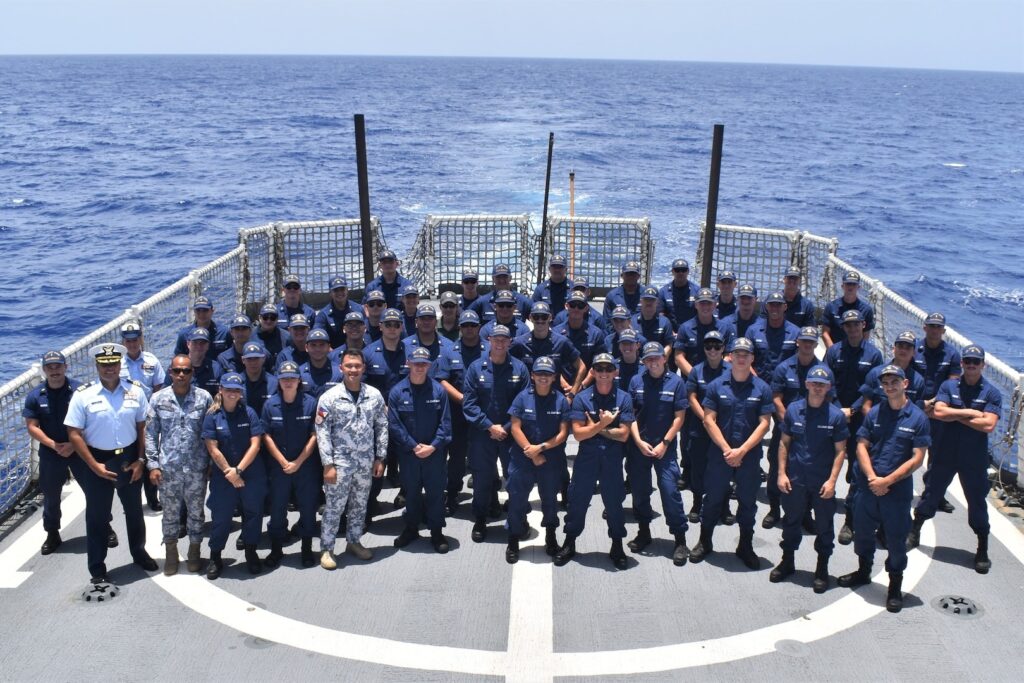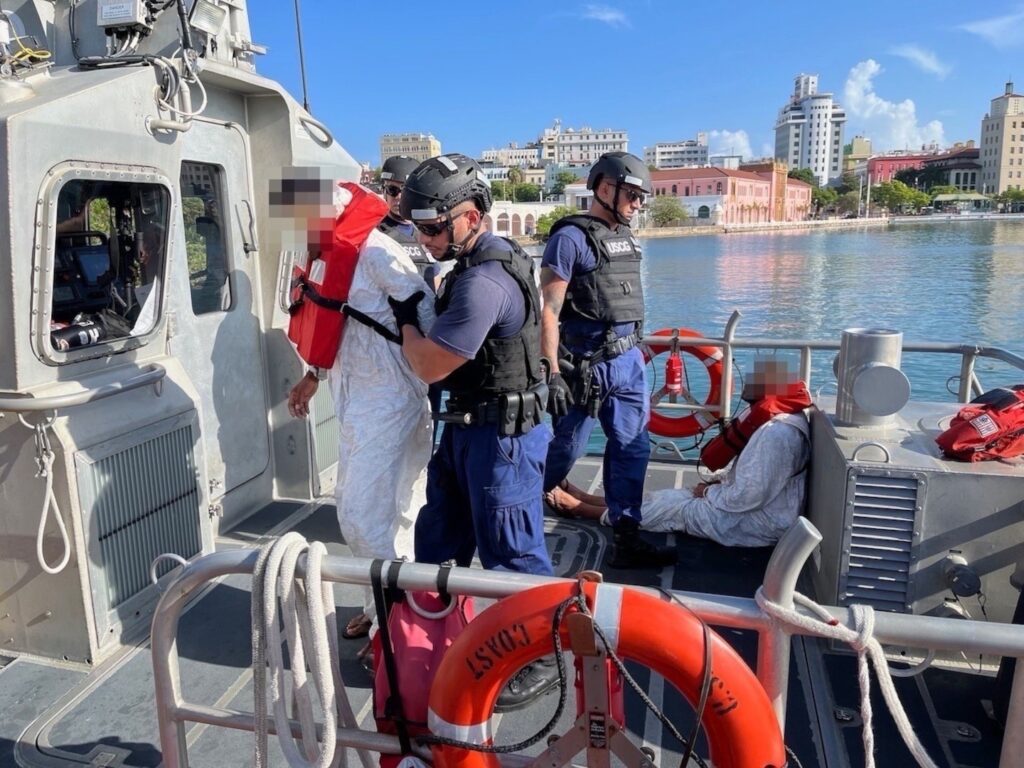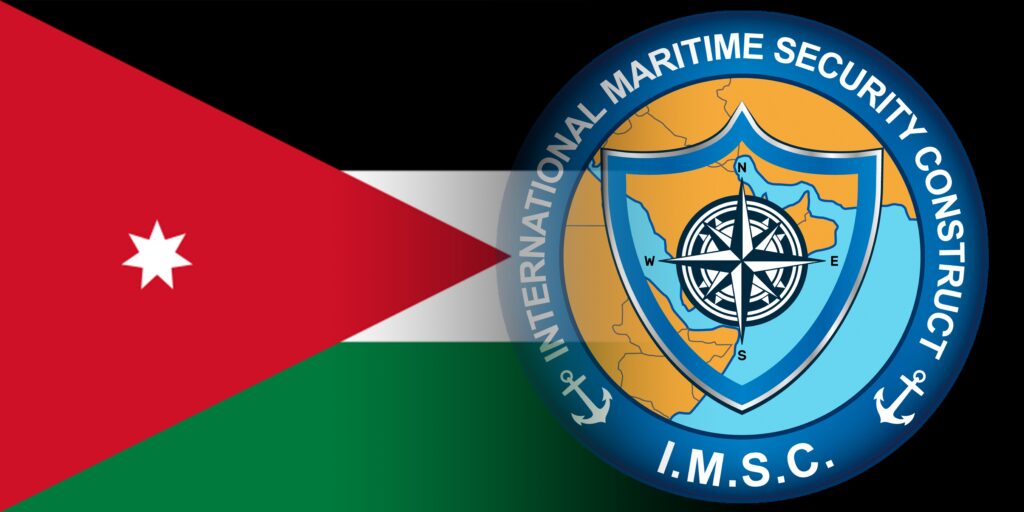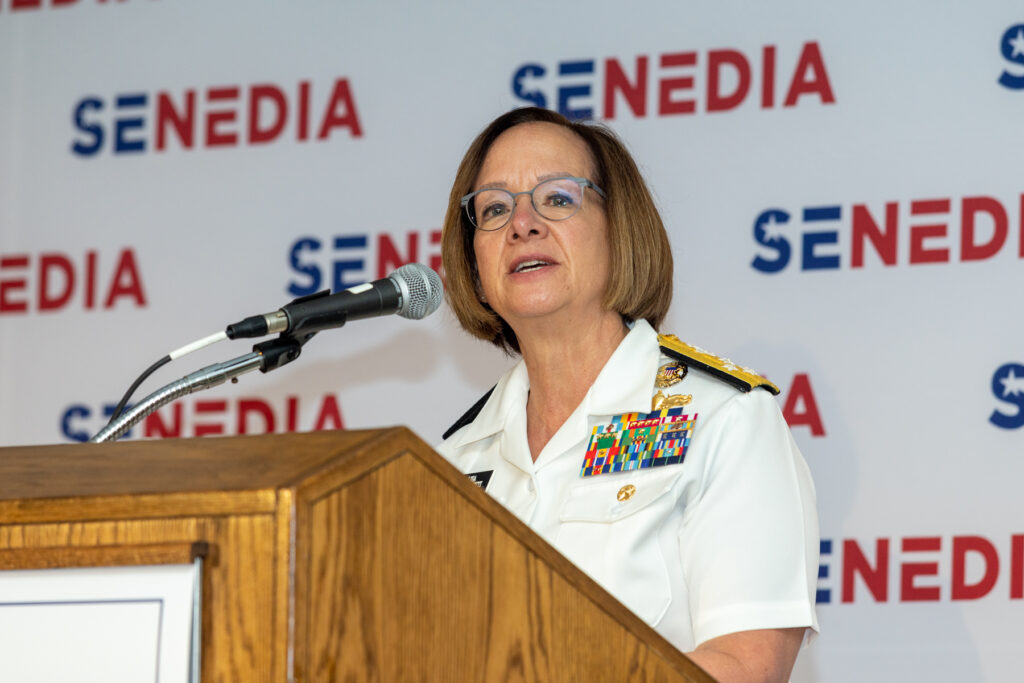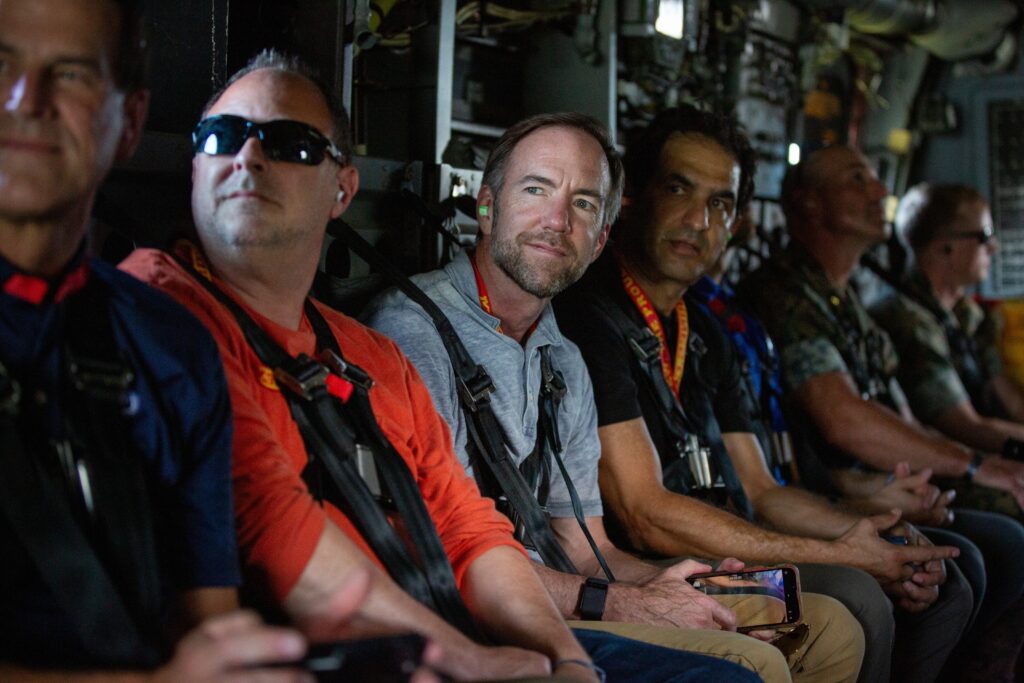USS Lake Champlain Decommissions After 35 Years of Distinguished Service
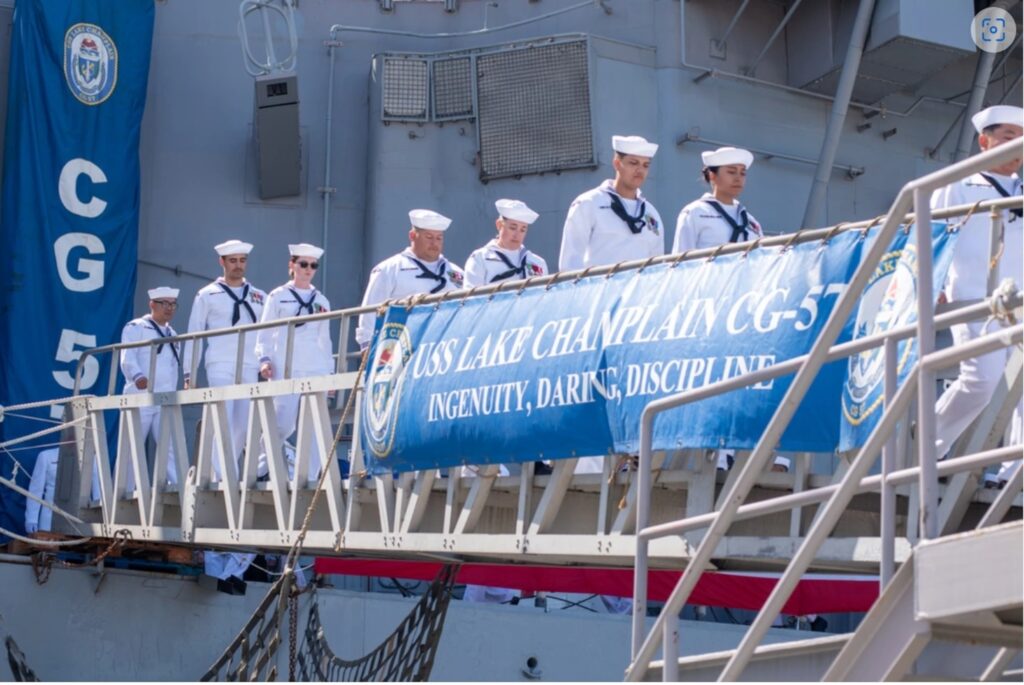
Release from Commander Naval Surface Force, U.S. Pacific Fleet
*****
01 September 2023
San Diego, CA, UNITED STATES
Ticonderoga-class guided-missile cruiser USS Lake Champlain (CG 57), the 11th ship of its class, was recognized for more than 35 years of naval service during a decommissioning ceremony at Naval Base San Diego, Sept. 1.
During the ceremony guest speaker Vice Adm. Thomas H. Copeman III (Ret.) wished the current crew fair winds and following seas as they bid farewell to their ship. Copeman was a former Lake Champlain executive officer and the 17th Commander, Naval Surface Forces.
“Behind me is a machine of wonderous complexity and capability. It is truly a marvel of modern technology dedicated to decisive combat operations at sea,” said Copeman. “The fact that she is sitting here, still mission capable is a tribute to the surface Navy and all the people tasked to support the surface fleet. It is those Sailors who have literally given the primes of their lives to the United States Navy keeping this machine in fighting shape that we are really here to pay tribute to.”
The former commander concluded, “Without all these dedicated Sailors, officers and enlisted, the ship behind us would have been nothing but a monument to technology. For 35 years it was the home for thousands of Sailors.”
Lake Champlain’s Commanding Officer, Capt. Steven M. Foley reflected on the service of his crew and those who came before.
“It truly has been my honor and privilege to have served as Lake Champlain’s 19th and final commanding officer,” said Foley. “I served before on this fine warship as a chief and senior chief and was also selected as an officer. CHAMP built a reputation on the waterfront for bringing out the best in her Sailors, just like she did in me. To all the CHAMP Warriors – past and present – Fighting 57 will be eternally grateful and proud of your hard work, dedication, and commitment to excellence! As we bid farewell, we thank all those that stood the watch and give special thanks to the family and friends for their continued love and support over three and half decades. CHAMP may be gone, but the memories we shared and the legacy we made will live forever in our hearts.”
Selected for the limited duty officer program while both were assigned to Lake Champlain, Foley credits Copeman’s guidance throughout his career for the opportunity to serve as the ship’s final commanding officer.
Lake Champlain maintained a crew of 40 officers, 31 chiefs and 300 enlisted Sailors, and never changed homeports from San Diego. The ship was built in Pascagoula, Mississippi, by Ingalls Shipyard Company and commissioned Aug. 12, 1988, in Manhattan, New York City, New York. Through the course of its distinguished service, Lake Champlain supported Operations Enduring Freedom and Southern Watch, Global War on Terrorism, Maritime Security Operations (MSO) in the North Arabian Gulf (NAG), and counter piracy operations and was awarded 11 Battle Effectiveness (Battle “E”) Awards, three Navy Unit Commendations, and two Meritorious Unit Commendations.
Lake Champlain’s rich deployment history spans three and a half decades. With its first deployment beginning in 1989, the ship completed 17 major deployments. In 1990 the ship responded to an SOS from the Chinese cargo ship M/V Huazhu which was in distress and taking on water. Upon arrival, Lake Champlain and four other ships joined other merchant vessels in the search but could find no sign of the stricken ship or its crew. In heavy seas and with the weather worsening through the day, they searched for the crew. Eventually, USNS Navasota (T-A0 1061) spotted logs and survivors clinging to debris. In ten-to-twelve-foot seas and darkening, overcast skies, the helicopter flight crews and rescue swimmers battled the elements and the added danger of Huazhu’s adrift cargo to pull survivors out of the frigid waters in the Northern Philippine seas. One of Lake Champlain’s petty officers spotted a survivor among a drift of logs that were being buffeted by the heavy seas. Disregarding his own personal safety, he jumped into the rough waters and pulled the man out. He was later awarded the Navy and Marine Corps Medal for his heroic actions. In worsening weather conditions and his body trapped in a particularly large drift of debris, only the Huazhu’ s captain was not recovered.
In all, 14 survivors were rescued and five bodies were recovered. Taken onboard Lake Champlain for transport to Subic Bay, Philippines, the ship’s two-person medical department treated the men. Two were severely injured and received immediate and intensive care that would later be credited with saving their lives. The rescued crewmen waved as they went ashore and the ship’s crew lining the rails waved back. One of the seriously injured was miraculously able to walk off the ship with some assistance and thanked the captain on the pier. Overcome with emotion, he hugged him before allowing himself to be led off to the ambulance. Lake Champlain departed Subic Bay 31 minutes after arriving.
The following year, CG 57 again stopped briefly in Subic Bay, Philippines to support Operation Fiery Vigil evacuations after the eruption of Mt. Pinatubo. The ship evacuated 844 personnel in three runs, covering 2,500 miles in five days.
In 1993 Lake Champlain seized over 7-tons of cocaine, after intercepting Mexican vessel Oso IV, during counter-drug Operation Tidal Wave in the eastern Pacific.
Lake Champlain lived up to the legacy of its predecessors.
CG 57 was the third U.S. Navy warship named to commemorate the victories during the War of 1812 in the waters of Lake Champlain and the lakeside town of Plattsburg, New York.
On Sept. 11, 1814, Brigadier General Alexander Macomb and his troops defended Plattsburg while Master Commandant Thomas MacDonough and his ships defended Lake Champlain from the converging British forces. The defense of Plattsburg and Lake Champlain solidified the American advantage and withheld British territorial gains.
The first ship of the fleet to bear the name Lake Champlain (AC 7) was a cargo ship during World War II making three round trips to Europe, carrying various supplies such as coal, ammunitions, provisions, and soldiers. AC 7 was decommissioned on March 20, 1919.
The second ship of the fleet to bear the name was an Essex-class aircraft carrier, USS Lake Champlain (CV 39) commissioned on June 3, 1945, and was the last U.S. Naval aircraft carrier with an axial flight deck. Too late to see action in World War II, the ship was assigned to “Magic Carpet” duty repatriating US military personnel. Decommissioned briefly in the late 1940s, the ship again served in the combat zone off Korea providing air support, later served off the coast of Lebanon in 1957, and was active during the 1962 quarantine of Cuba. The ship was also part of both the Mercury and Gemini Programs prior to decommissioning on May 2, 1966.
The decommissioning of CG 57 supports department-wide business process reform initiatives to free up time, resources, and manpower in support of increased lethality.
